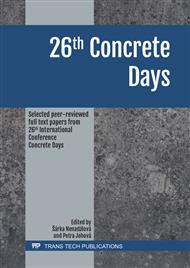p.98
p.103
p.108
p.114
p.120
p.126
p.132
p.140
p.149
Application of Modified Peat Aggregate for Lightweight Concrete
Abstract:
The scientific article "Application of Modified Peat Aggregate for Lightweight Concrete" presents the results of studies of the properties of a new composite material for use in enclosing structures of residential and public buildings. Physical and mechanical characteristics of possible aggregates of local production for this type of concrete affecting its operational properties are considered. The prospects of using fly ash as an additive improving the characteristics of polystyrene concrete with the addition of modified peat have been established. The analysis was made and the optimal compositions for obtaining lightweight concrete based on peat and polystyrene foam were selected. The desorption properties of lightweight concrete important for its effective operation as a wall material were tested. It was found that the use of new types of surfactants can improve the water wettability of peat particles and polystyrene granules, thereby reducing the water-cement ratio and improving the compressive strength of the material. Possible efficiency of application of this type of concrete for use in enclosing structures of buildings and constructions under construction in seismic regions of Russia is considered. The presence of damping effect manifested in the material due to the presence of polystyrene granules in the perception of a certain level of load, which is important for the work of concrete under seismic influences, was experimentally established.
Info:
Periodical:
Pages:
120-125
Citation:
Online since:
August 2020
Authors:
Keywords:
Price:
Сopyright:
© 2020 Trans Tech Publications Ltd. All Rights Reserved
Share:
Citation:


